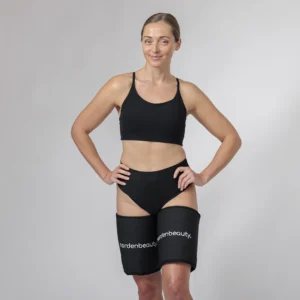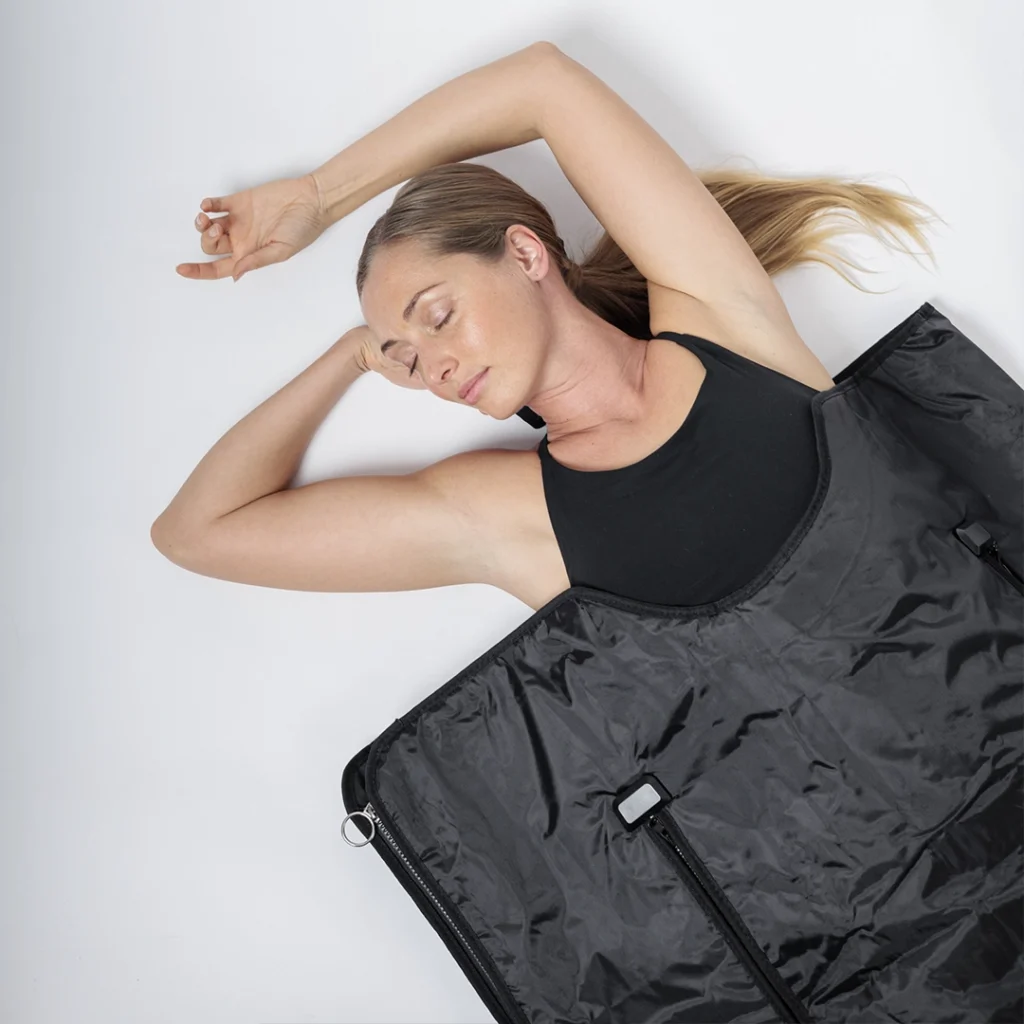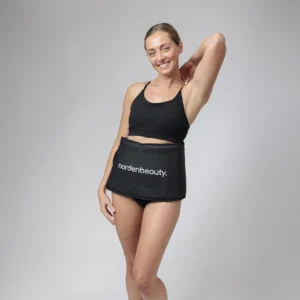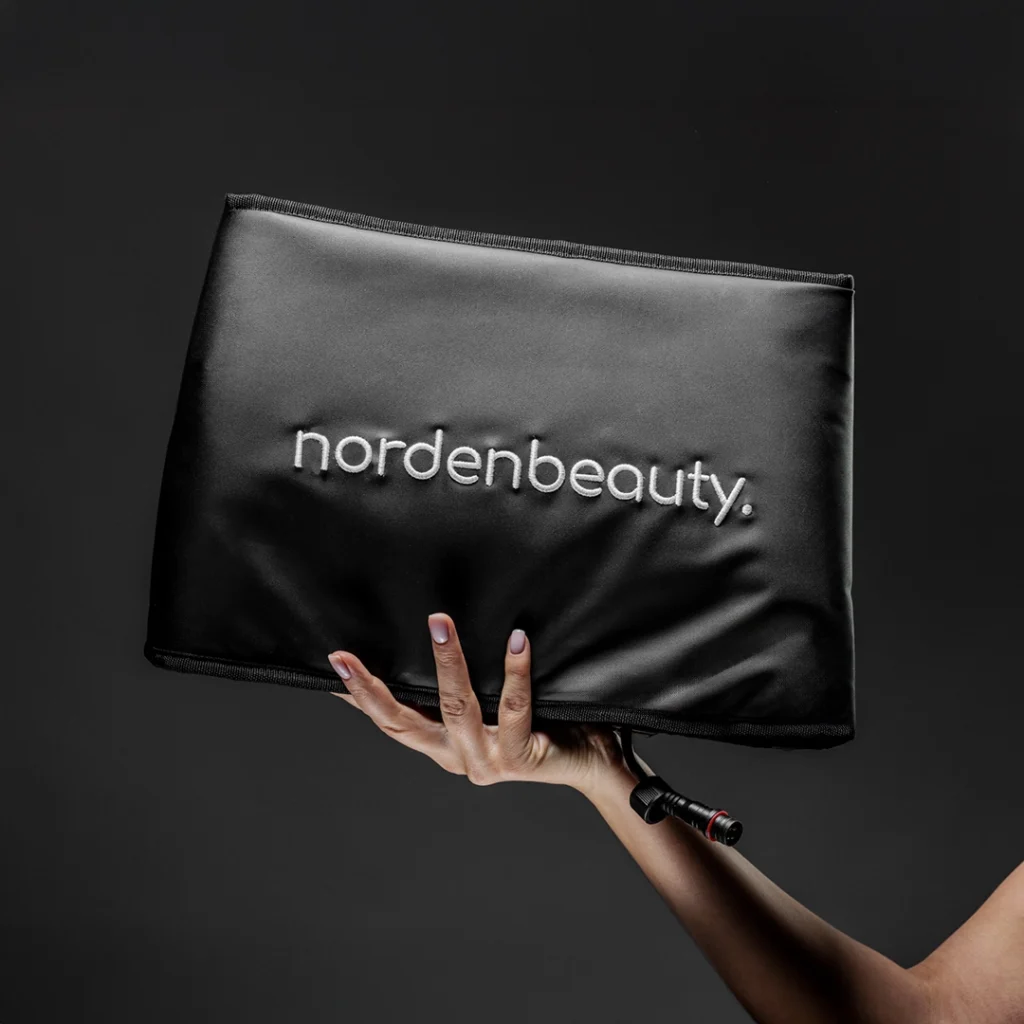How Do Infrared Belts Work?
Infrared belts use far-infrared (FIR) heating elements—typically carbon-fiber films—that convert electricity into radiant heat. Instead of just warming the air, FIR waves (roughly 3–16 μm) are absorbed by your skin and shallow tissues, creating a gentle, even warmth. That warmth triggers vasodilation (more blood flow), helps relax tight muscles, and can stimulate sweating—the same broad principles behind infrared saunas, but targeted to your midsection or lower back.
Ready to feel the difference?
Open the Infrared Belt product page.
The science in plain Language
1) Radiant heat → better circulation & relaxation
Heat causes local blood vessels to widen (vasodilation). More circulation brings oxygen and nutrients, helping muscles loosen and easing stiffness and discomfort.
2) Gentle hyperthermia → sweat & fluid movement
Raising skin temperature encourages sweating, which may carry small amounts of waste/by-products with it and can reduce temporary bloating or water retention.
3) Proven for heat-based pain relief
Randomized studies on continuous low-level heat wraps show reductions in low-back pain and menstrual cramp intensity. Infrared sources are one way to deliver that steady warmth.
4) FIR vs. LED “red light”
An infrared belt is primarily a thermal device (comforting heat). LED red/NIR panels are non-heating “photobiomodulation” tools. Some people use both, but they’re different mechanisms.
What infrared belts can (and can’t) do
-
Help you feel and move better: Great for muscle tension, lower-back discomfort, and period cramps when used as directed.
-
Support a body-shaping routine: The warmth can reduce temporary water retention and make tissues feel softer/smoother. For lasting fat loss, pair sessions with nutrition, activity, and consistency.
-
Calm the midsection: Many users report a flatter-feeling waist post-session (from fluid shifts/sweat), plus a relaxed core.
-
Not a magic wand: Heat won’t replace healthy habits or spot-reduce fat by itself—but it can make those habits easier to keep.
How to use an infrared belt (step-by-step)
-
Placement: Wrap it low around the abdomen/waist for shaping or cramps; move to the lower back for back tension.
-
Layering: Use a thin cotton layer or fitted shorts between skin and belt for comfort and easy cleanup.
-
Temperature: Start at 45–55 °C for the first few sessions. As you get comfortable, you can increase gradually (device max on our model: up to 75 °C).
-
Time: Begin with 15–20 minutes. Work up to 30–40 minutes. Advanced users can go longer only if your manual allows and you feel well.
-
Hydrate: Drink water before and after.
-
Clean & store: Let it cool, wipe with a damp cloth, and store in a cool, dry place.
See settings, sizing (up to ~115 cm waist), and FAQs → Infrared Belt
Who it’s great for
-
Desk-tight backs & core stiffness
-
Period discomfort (front abdomen or lower back)
-
Post-workout muscle tightness
-
People who want a calming, at-home warm-therapy habit
Pro tips for better results
-
Before a workout: 10–15 minutes on low helps loosen tissues.
-
For cramps: Start at first signs; alternate front abdomen and lower back.
-
For routine shaping: 3–5 sessions/week + gentle movement + hydration.
-
Stack smart: Many pair heat with stretching, mobility work, or (if appropriate for you) OTC analgesics.
-
Consistency > intensity: Comfortable heat used regularly beats “max heat” once in a while.
Safety snapshot
Infrared belts are generally well-tolerated when used as directed. Do not use over broken/irritated skin, on numb areas, or while sleeping. Avoid abdominal heat if you’re pregnant. Talk to your clinician first if you have cardiovascular disease, neuropathy/diabetes with reduced sensation, implanted devices, recent surgery or metal implants near the area, active skin disease, or you’re sensitive to heat. Stop if you feel dizzy, nauseated, or unwell.
FAQ
Does it actually “burn fat”?
Heat increases comfort, blood flow, and sweating. That can support a slimming plan—but sustainable fat loss still comes from overall energy balance. Think of the belt as a helpful adjunct, not a replacement.
How soon will I see changes?
Many feel immediate relaxation. Visual changes (smoother, less puffy midsection) can appear right after a session from fluid shifts; 2–4 weeks of steady use is a realistic window for more consistent improvements.
Can I use it daily?
You can, but most people do well with 3–5 times/week. Take rest days if you feel overheated or fatigued.
Clothes or bare skin?
Thin cotton is ideal (or fitted shorts). You can use it on bare skin if comfortable, but avoid prolonged direct contact at higher temps.
What’s different about this belt vs. a standard heating pad?
Infrared belts deliver broad, even radiant heat via carbon-fiber elements and wrap securely around your core, so you can move or sit hands-free.
The takeaway
Infrared belts work by delivering gentle FIR radiant heat that boosts local circulation, relaxes muscles, and encourages sweat—a simple, at-home way to feel looser, calmer, and more comfortable while supporting your shaping goals.
Try it during your next wind-down → Check the Infrared Belt product page.
References for your editor (optional)
-
FIR basics & biology: Overview of far-infrared radiation and biological effects; human bodies both absorb and emit FIR (peak ~9.4 μm). PMC
-
Carbon-fiber FIR emitters: Carbon-fiber heaters used to generate long-wave IR/FIR; belts commonly use these elements. Gov.uk AssetsScienceDirect
-
Vasodilation & heat: Heat increases blood flow via vasodilation; helpful for muscle tightness. Cleveland ClinicHarvard Health
-
Heat for low-back pain: Continuous low-level heat wraps reduce pain and disability in trials. PubMed+1
-
Heat for menstrual cramps: Heat wrap trials show relief comparable to or better than common analgesics in early hours. PMCPubMed
-
Infrared therapy for musculoskeletal pain: Systematic review supports IR as a complementary modality. MDPIPMC
-
Sweat & excretion: Studies report trace element/metal excretion in sweat; amounts are small and individual—primary detox remains liver/kidneys. PMC+1




